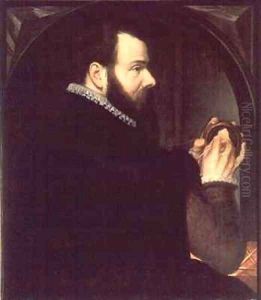Willem van den Broecke Paintings
Willem van den Broecke, also known by his Latinized name Guilielmus Paludanus, was a Flemish Renaissance sculptor and medallist. Born in 1530 in Mechelen, which at the time was a part of the Habsburg Netherlands, van den Broecke was known for his fine craftsmanship and contributions to the Northern Renaissance art movement. He was particularly recognized for his small bronze sculptures, which were often based on classical antiquity themes and mythology, as well as religious subjects.
Not much is known about his early life and training, but it is believed that he was possibly trained in Italy, which was a common practice among artists of his time who wished to absorb the Italian Renaissance influences. His style suggests that he was aware of the works of Italian masters such as Michelangelo and Giambologna, which he combined with the Northern European artistic traditions.
Van den Broecke's works were characterized by their intricate details and dynamic compositions. He had the ability to convey movement and emotion in his figures, a quality that was highly admired. His medals also demonstrate a high level of skill, with precise portraits and allegorical representations on the reverse sides.
He spent most of his career in his hometown of Mechelen, where he became a master in the local Guild of Saint Luke, the guild of artists and craftsmen, in 1551. His reputation as a sculptor grew, and he received commissions from local patrons as well as from abroad, including from members of the Habsburg dynasty.
Willem van den Broecke died in 1580 in Mechelen. While he may not be as widely known today as some of his contemporaries, his work remains an important part of the art historical narrative of the Northern Renaissance. His sculptures and medals continue to be studied for their technical proficiency and artistic beauty, and they can be found in various museum collections around the world.
